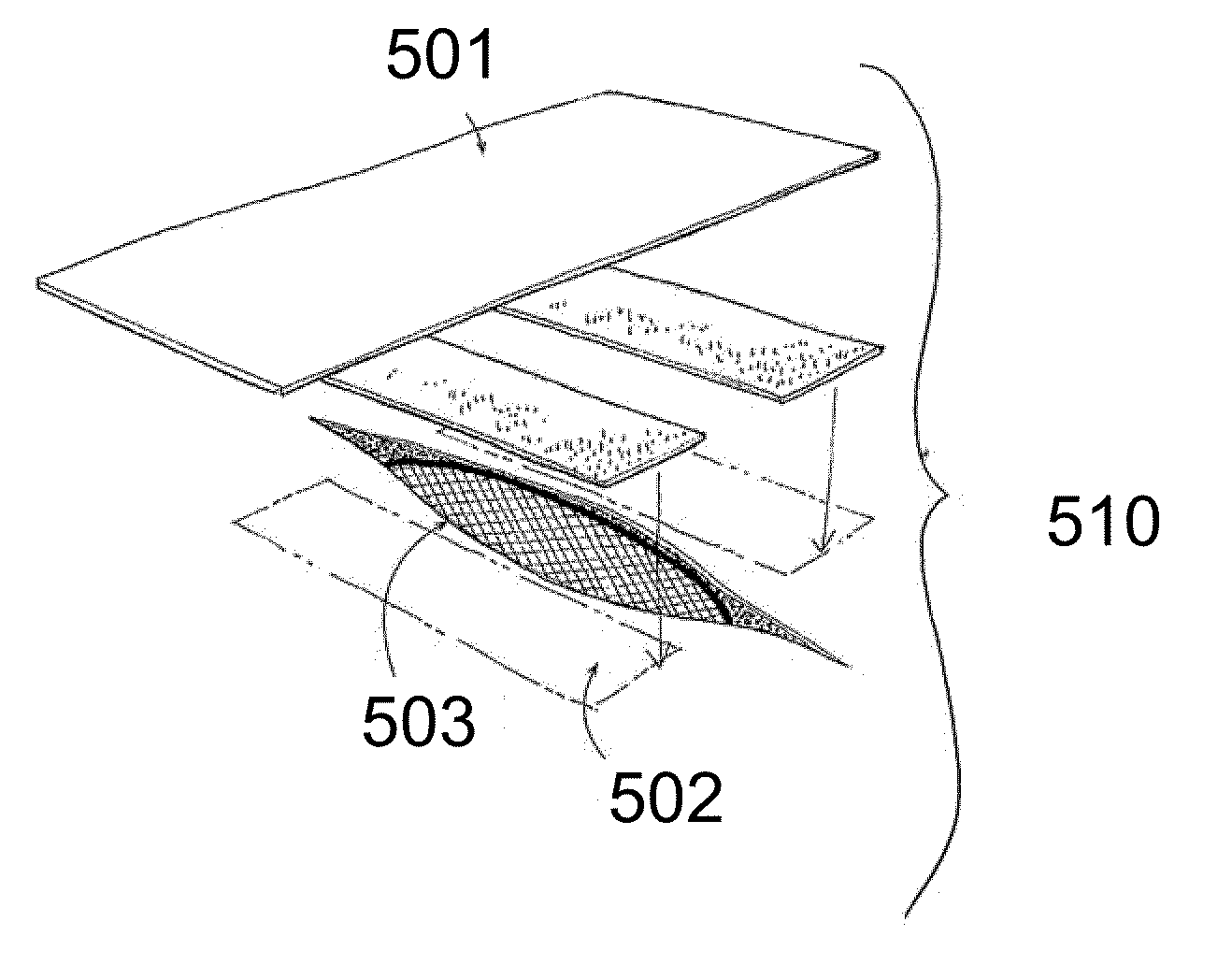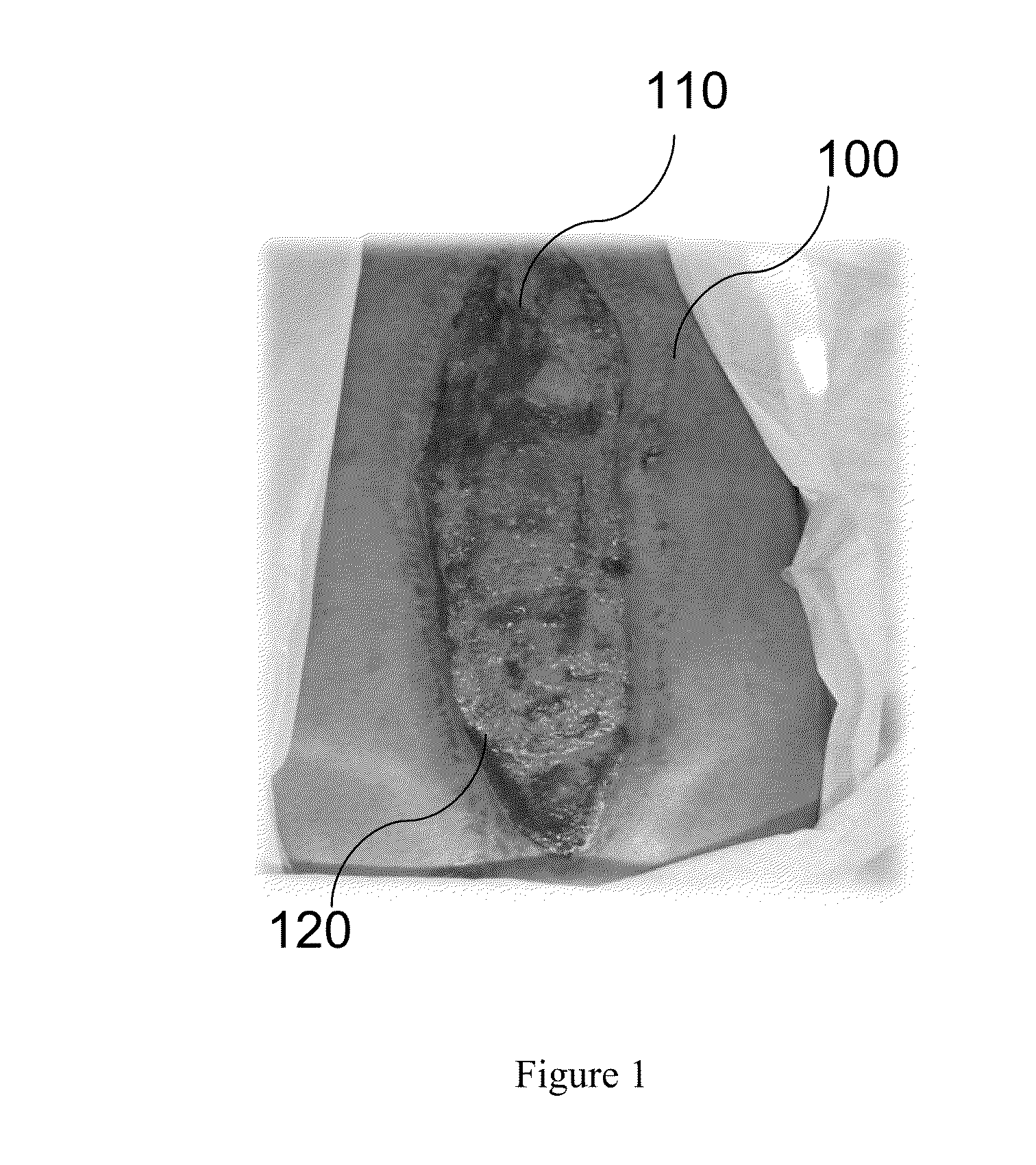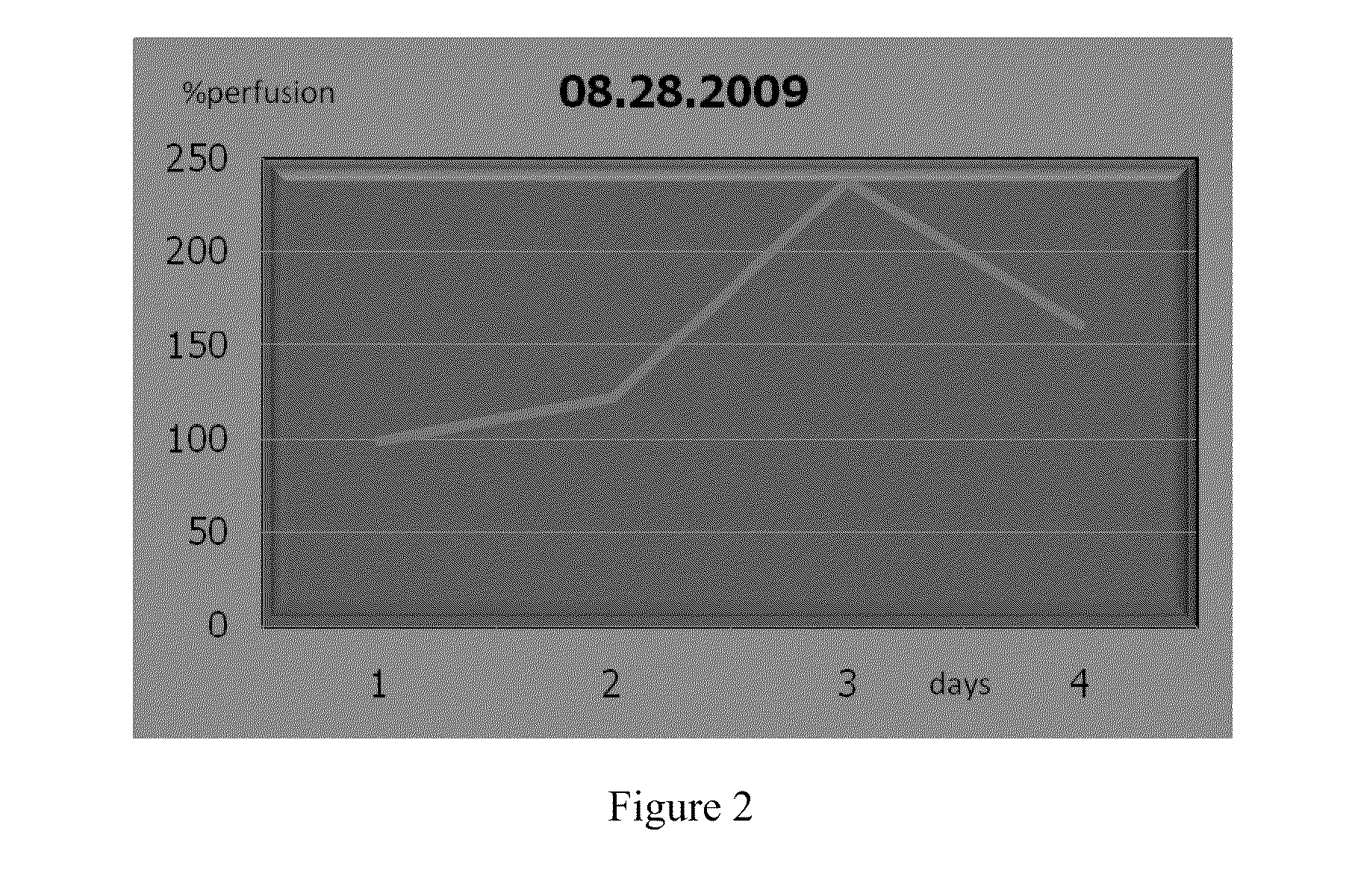Medical device for shrinking open wounds
a medical device and open wound technology, applied in the field of shrinking open wounds, can solve the problems of recurrent infections, inconvenient and expensive application of protracted dressings, and no technique to aid wound closure, and achieve the effects of more external wound closure, cost-effective use, and effective healing
- Summary
- Abstract
- Description
- Claims
- Application Information
AI Technical Summary
Benefits of technology
Problems solved by technology
Method used
Image
Examples
Embodiment Construction
[0044]In FIG. 5 the external device 510 generally comprises an elastic covering 501, a first and second skin coupling components 502, and an expandable dressing 503. In especially preferred embodiments the device is entirely non-invasive—no needles need be inserted into the skin, and no sutures need be applied to the skin for use with the device.
[0045]The elastic covering 501 preferably comprises an elasticized fabric with or without punched holes, these being intended to fix onto or adhere to the skin hooks on the first element and sequentially advance into new positions over time promoting traction approximation of the wound edges.
[0046]Each of the skin coupling components 502 preferably comprises an adherent posterior surface intended to adhere to the skin on either side of the open edge of the wound, and anterior surface comprising ‘hook-like’ protrusions, which when connected to the elastic covering 501 promotes traction approximation of the open wound. The posterior surface of...
PUM
| Property | Measurement | Unit |
|---|---|---|
| Force | aaaaa | aaaaa |
| Pressure | aaaaa | aaaaa |
| Shrinkage | aaaaa | aaaaa |
Abstract
Description
Claims
Application Information
 Login to View More
Login to View More - R&D
- Intellectual Property
- Life Sciences
- Materials
- Tech Scout
- Unparalleled Data Quality
- Higher Quality Content
- 60% Fewer Hallucinations
Browse by: Latest US Patents, China's latest patents, Technical Efficacy Thesaurus, Application Domain, Technology Topic, Popular Technical Reports.
© 2025 PatSnap. All rights reserved.Legal|Privacy policy|Modern Slavery Act Transparency Statement|Sitemap|About US| Contact US: help@patsnap.com



